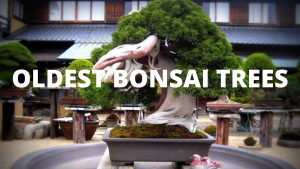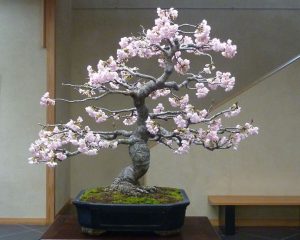How Much Do Bonsai Trees Cost?
The art of bonsai is a fascinating hobby and one that can be learned by nearly anyone. The only requirement for this wonderful pastime is a little bit of patience because it takes years to train a bonsai tree into its final form. As bonsai hobbyists usually wish for their trees to become show quality specimens there is a lot of time and money involved.
The costs for bonsai trees vary vastly depending on the type of tree you are looking for, how large it is when you purchase it and whether or not you intend to use your tree for exhibitions only or everyday use as well.
That is why we look at bonsai tree pricing and how to figure out the most appropriate bonsai cost for your tree.
Why Do Bonsai Trees Cost So Much?
When it comes to the cost of bonsai trees, there are a few factors to take into account. The most expensive trees are those that are taken from the wild and need to be heavily trimmed and styled in order to fit into the bonsai pot.
Another reason why bonsai trees can be quite pricey is because of the time and effort that goes into training them. Unlike other plants, bonsai trees require a lot of attention and care if you want them to look their best.
Bonsai enthusiasts often spend a lot of money on their trees, accessories, and tools, but the end result is a beautiful piece of art that can be enjoyed for years to come. If you are passionate about bonsai and wish to take up this hobby, then it is worth investing in a variety of trees and tools.
What Is the Average Bonsai Tree Price?
The price for bonsai trees will vary greatly depending on what kind of tree you are looking to purchase, but there are some average prices that can be used as a guideline while shopping. Mame bonsais or dwarf bonsais cost anywhere from $40 – $75 for small varieties while larger types usually range between $100-$150. Once you get into the serious hobbyists’ sizes of 6-8 inches they cost around $750.
There are also pre-bonsai starter kits that contain everything that new gardeners need to get started at prices ranging between $10-$50. If you find the perfect bonsai tree but it is too large to keep indoors then you can purchase bonsai lighting that will help to control their growth.
What Determines The Cost Of A Bonsai Tree?
There are a few factors that you need to consider when determining the cost of your bonsai tree. The size of your tree will be one of the biggest factors in determining its value, so if this is something you are concerned about then you should stick with searching for smaller trees.
However, price, size, type, age, and rarity are also concerning factors for determining the cost of a bonsai tree.
Bonsai Size:
When it comes to the size of a bonsai tree, there are three main sizes that are usually considered: miniature, small, and medium. Mame bonsais or dwarf bonsais are the smallest variety and usually range in size from 2-10 inches high.
Small bonsais are around 10-20 inches high and can be used for everyday enjoyment as well as for exhibitions. Medium or standard size trees are anything over 20 inches and are mainly used for exhibition purposes.
The size of a bonsai tree is often determined by the type of tree that is being used. Some trees, like the juniper, are naturally small and make a great name or dwarf bonsais. Other trees, like the Japanese maple, are usually much taller and need to be pruned back greatly in order to become suitable for bonsai training.
Age Determining

The age of a bonsai tree is one of its greatest assets. Old and antique trees that have been well-kept and cared for can be worth much more than new specimens that are just starting out. Keep in mind that all bonsai trees need time to develop their full potential so don’t expect to get rich overnight from your prized possession. But if you take care of your bonsai it will definitely increase in value over time.
Type/Species:
There are thousands of different types, or species, of bonsai trees out there so it is hard to determine which variety will offer you the best value for money at any given time. The main thing about most species is that they are all expensive when bought new because they have not yet reached their peak condition.
However, if you are lucky enough to own an older tree that has been developed over many years then it might be worth more than newer specimens.
Rarity:
The rarity of a bonsai tree is determined by the availability of the specimen itself. Some varieties have great potential but are not very attractive so they will not sell well for much money. Other trees are still in their early stages of development and will take many years to mature.
The most common bonsai trees are the types that have already reached maturity and can be found at affordable prices.
The difficulty of Growth:
The difficulty level of bonsai trees is determined by the tree’s natural tendencies. Some are easily trainable while others will require specific training methods that can take years to complete. There are also some species that are easier to keep in their miniature stage while they grow, while other varieties need constant attention in order to maintain correct growth habits.
Design of the Bonsai

The design of a bonsai tree is one of the best selling points. A good design will have curves that are appealing to both the eye and hand. A well-designed specimen will be able to easily transform from a miniature forest scene into a small display garden with ease.
Should I Need to Buy Expensive Bonsai?
The answer depends on your budget and your level of interest in bonsai. If you are new to the hobby then an inexpensive specimen will be more than enough at first. You can admire its beauty while learning about how to care for it properly, cleaning up spills, and just making sure that it is staying in good condition.
When you feel ready you can begin looking for a more advanced specimen, but keep in mind that there is no prize for getting the best bonsai as long as you enjoy looking at it. Some specimens are better than others but they all have an equal value to their owner as long as they give them joy and peace of mind. So it’s your choice where to start, inexpensive or expensive one.
Conclusion:
Though Bonsai trees are expensive in general, there are ways to get them at affordable prices. You can find good specimens that are still growing well without looking too far into the future. You can also train your own trees with patience and care if you feel ready for this challenge.
If you follow these tips then you will definitely be able to get a beautiful and impressive bonsai for a really good price. Good luck and happy growth!

